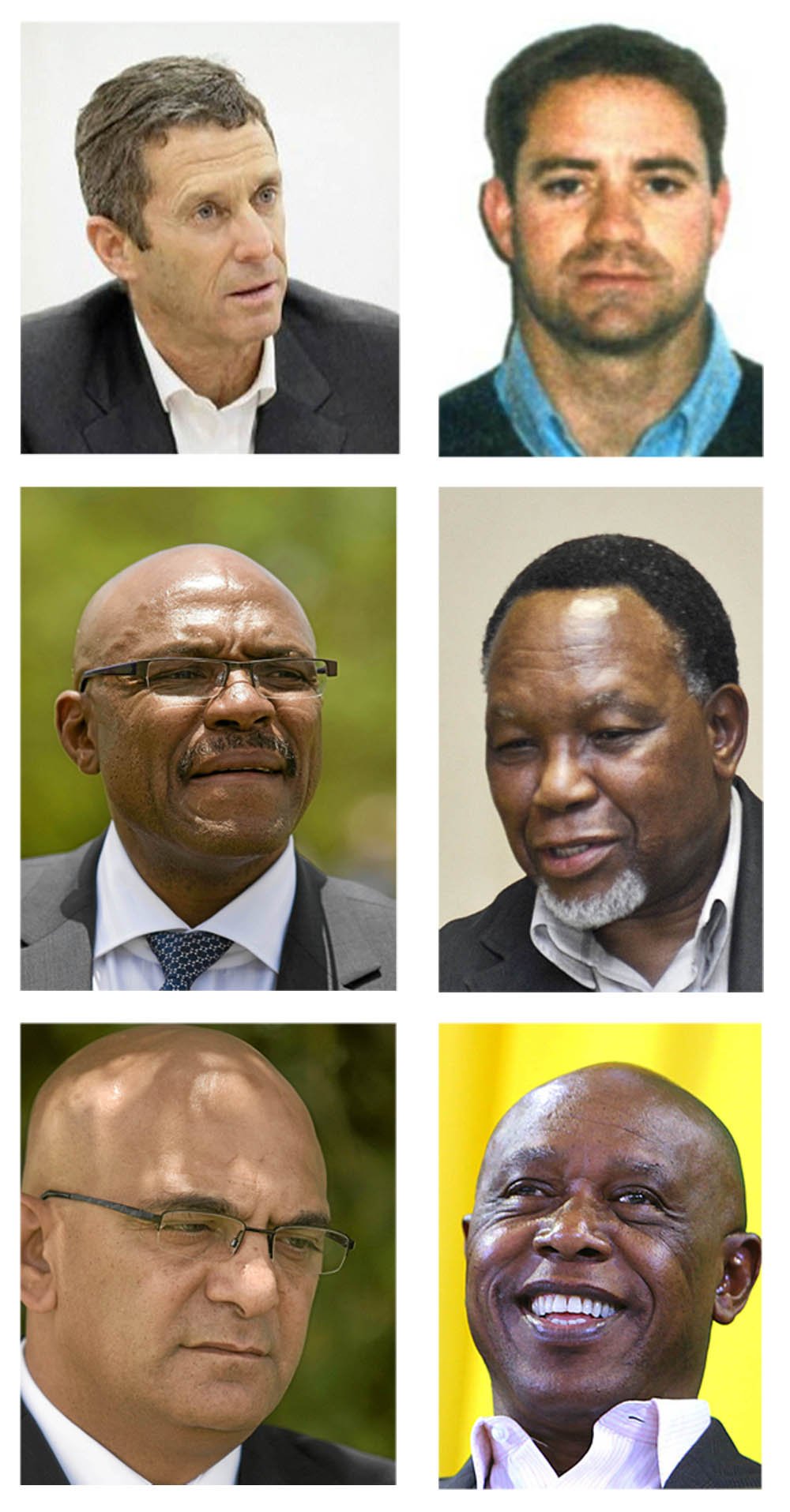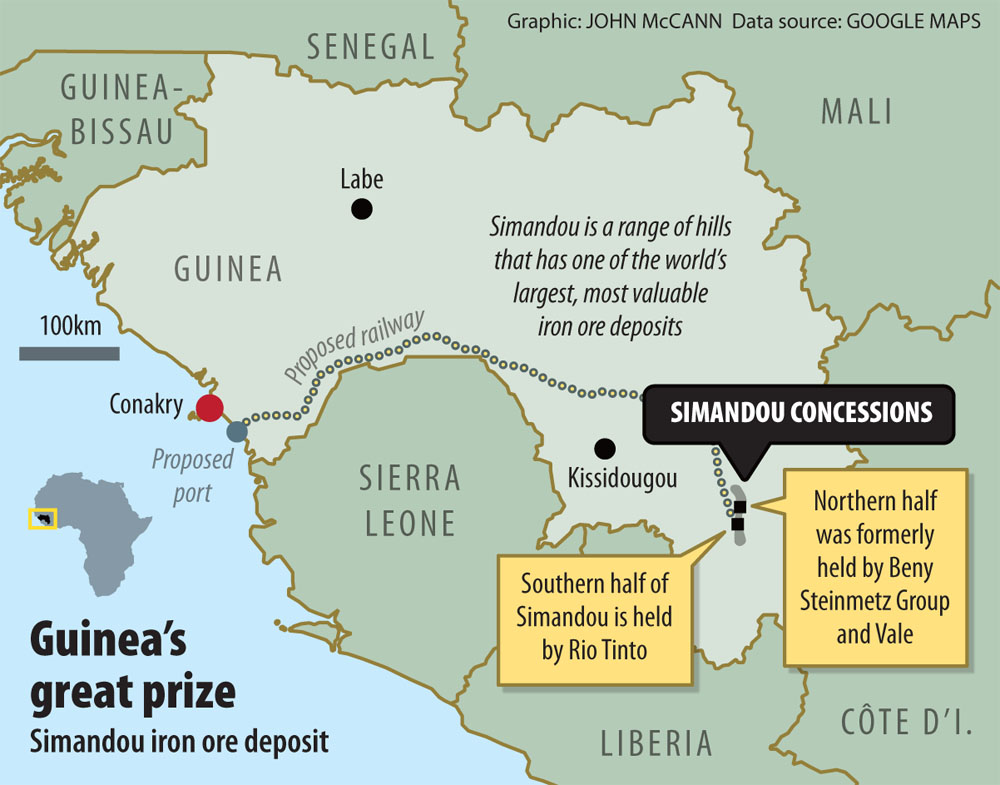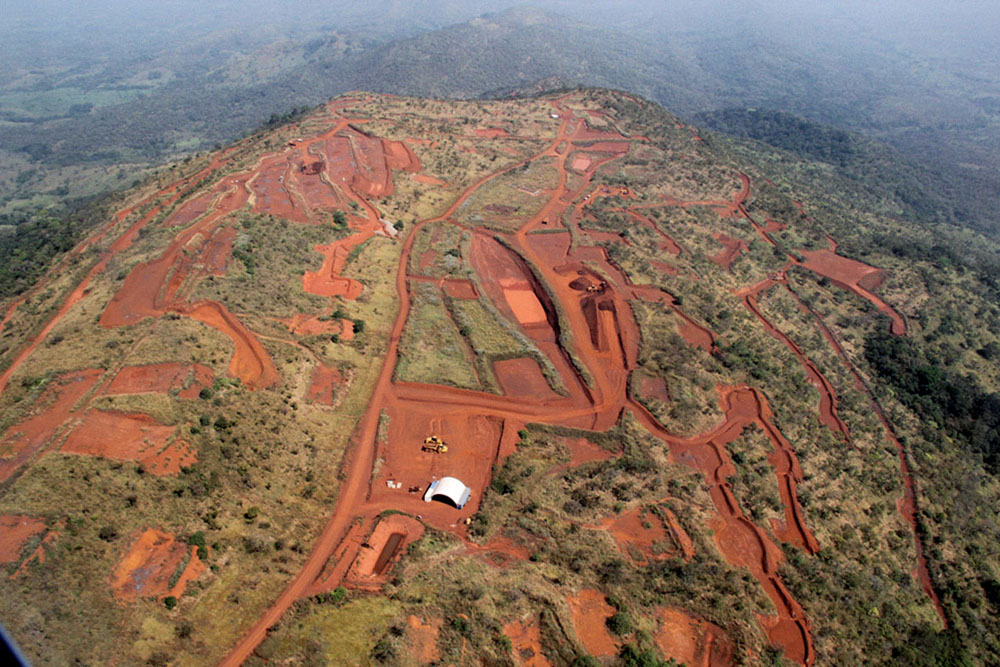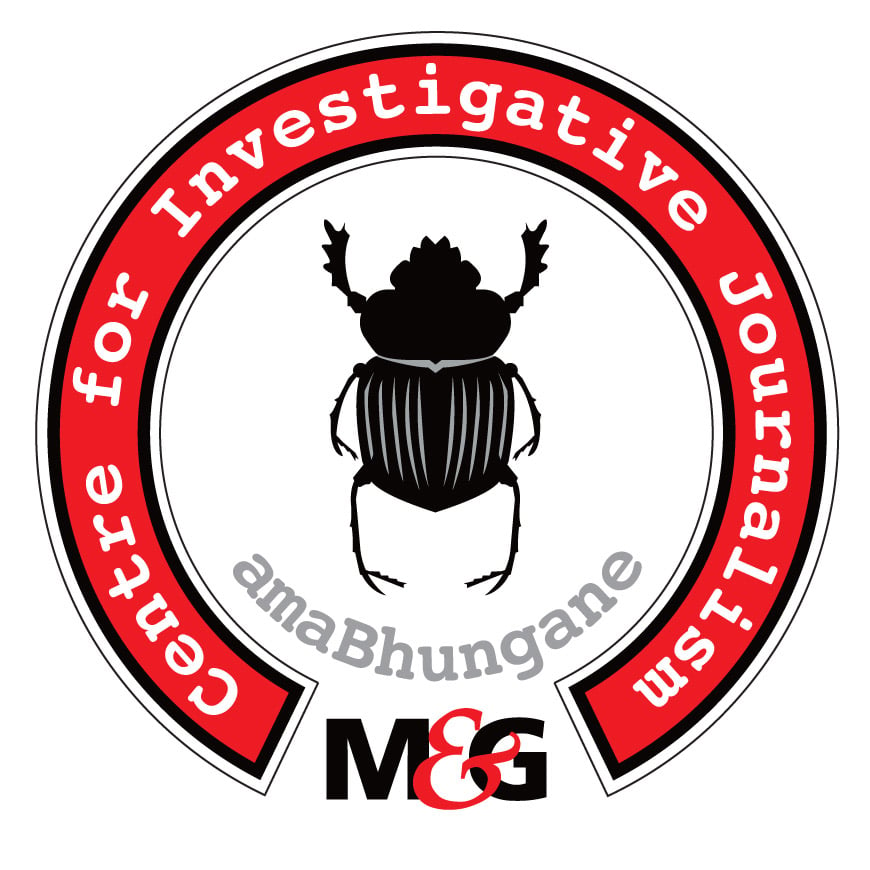Alpha Condé won Guinea's first democratic elections. Now accusations have emerged that South Africans may have helped prop him up.
Claims festering for two years that South African business and intelligence interests rigged elections in Guinea have burst into the open in a New York court battle over the Eldorado of iron mining.
At stake is the ore mass that is the Simandou mountain range in the West African country’s forested south, thought to be the world’s richest iron deposit.
In a court filing last week, mining dynast Beny Steinmetz named 83 individuals and companies – key among them South African politicians, businesspeople and spooks – he said may have evidence of the “corrupt rigging” that culminated in the “unlawful misappropriation” of his company’s stake in Simandou.
But Steinmetz, a Franco-Israeli billionaire whose global footprint includes renewable energy projects in South Africa, may have trouble convincing the New York court of his claims, with a related FBI investigation lapping at his own feet.
The South Africans that Steinmetz named include former deputy president Kgalema Motlanthe, former secret service head Moe Shaik, former national intelligence head Gibson Njenje, politician-tycoon Tokyo Sexwale and Waymark Infotech, a South African company that helps African governments to run elections.
Those who responded to amaBhungane this week said that they knew nothing about the matter.
Tug of war
The tug-of-war over Simandou has played out in boardrooms, whispered spin campaigns, anonymous intelligence dossiers and law enforcement investigations spanning the Atlantic ever since Alpha Condé became Guinea’s president at the end of 2010 and shook up the mining sector.
Now, proceedings in the Southern District of New York federal court have taken the fight to a new, altogether more public, level.
The plaintiff is mining behemoth Rio Tinto, which owns the southern part of the Simandou deposits but claims that Steinmetz and his BSG Resources (BSGR) stole the northern part from it by bribing Guinean officials in the pre-Condé era.

Clockwise from top left: Beny Steinmetz who has named, among others, Walter Hennig, Kgalema Mothlanthe, Tokyo Sexwale, Moe Shaik and Gibson Njenje in his US court filing.
Indeed, Steinmetz and BSGR’s acquisition of the northern part in 2008 is controversial. Rio Tinto was stripped of it in the final months of ailing dictator Lansane Conté’s rule, only for it to be handed to BSGR for free. Following Conté’s death, BSGR flipped a potential 51% stake to Brazilian multinational miner Vale, at up to $2.5-billion.
So stunning was Steinmetz’s windfall that Mo Ibrahim, the Sudanese billionaire campaigner for good governance, famously asked: “Are the Guineans who did that deal idiots or criminals, or both?”
Key role
Mamadie Touré, a young wife of the dying dictator, allegedly played a key role in landing Steinmetz the asset, and is named among the defendants in Rio Tinto’s suit.
An FBI corruption investigation has already ensnared Touré, who turned state witness, and Frédéric Cilins, a Steinmetz associate, jailed for trying to obstruct the FBI investigation after offering Touré money to destroy evidence.
But in their first detailed defence in the New York court, Steinmetz and BSGR claimed that they, in turn, were cheated when Condé’s administration relieved them and Vale of northern Simandou earlier this year.
They named Motlanthe, Shaik, Njenje, Sexwale and Waymark among the 83 witnesses they said were “likely to have discoverable information” that might be used in support of their defence. Also included were Mark Willcox, who co-founded Mvelaphanda Holdings with Sexwale, as well as Mvelaphanda itself and Walter Hennig, an associate of theirs.
The main claims in the court filing are:
- The Guinean presidential election that brought Alpha Condé to power in 2010 was “rigged” with the involvement of the South African Secret Service (Sass). This led to “the wrongful misappropriation” of BSGR and Vale’s right to mine Simandou.
- South African businesses “supplied illicit funds to rig” the election.
- Condé met with Sass agents, Guinean electoral commission officials (including its president, Lounceny Camara) and Waymark, “a South African information technology company involved in the rigging” of the election.
- Funds were provided by companies linked to Walter Hennig, the Sexwale associate, “in connection with” the alleged rigging of the election and stripping of BSGR’s and Vale’s mining rights.
Given the background and the size of the prize, the claims of Steinmetz and BSGR must be treated with caution. Their claims reflect information that was detailed in an anonymous report circulated to journalists and mining transparency campaigners in varying drafts since 2012.
Core claim
The latest version of the report seen by amaBhungane, titled Guinea Special Analysis, is dated January 25 last year. Its core claim is that Condé, then a candidate for the presidency, visited South Africa twice in 2010, first to meet President Jacob Zuma and then Sass officials.
According to the report: “In the later meeting, Alpha Condé solicited technical and financial assistance to guarantee the results of the upcoming elections in Guinea in exchange for the promise to grant his benefactors access to Guinea’s mining assets.” Allegedly, Waymark’s appointment by the electoral commission flowed from this.
Although some aspects of this tale are anchored in reality, amaBhungane has been unable to substantiate the central claim of Sass-sponsored electoral rigging.
Coincidentally or not, aspects of the claims come together in a plush fourth-floor office overlooking the 6m-high statue of Nelson Mandela in the centre of Sandton, Johannesburg.
Currently the office is occupied by a private intelligence agency called Foresight Advisory Services. The company is run by chief executive Heine van Niekerk, and its board members include Shaik and Njenje.
‘Good mate’
The person who was initially their landlord, from whom they subleased and who is still their neighbour at the office suite, is Hennig, the Sexwale associate. Van Niekerk this week acknowledged Hennig as a “good mate” of his.
All four – Van Niekerk, Hennig, Shaik and Njenje – were named by Steinmetz and BSGR as witnesses potentially with information specifically about “the involvement of the Sass in the corrupt rigging” of the election and of the “unlawful misappropriation” of BSGR and Vale’s Simandou stake.
In 2010, at the time of Guinea’s presidential election, Shaik was the head of Sass (now the foreign branch of the State Security Agency), and Njenje headed the National Intelligence Agency (now the domestic branch of the State Security Agency).
Shaik would not comment, and referred questions to the State Security Agency, which did not respond. Njenje said in an SMS that he “was at a loss with regard to the topic”.
But Van Niekerk, who was the chief executive of a junior mining company in 2010, confirmed a certain level of involvement, saying through a spokesperson that he met Condé in Paris that year: “Mr Condé explained that he, as a veteran politician and then current presidential candidate, had some West African regional stability concerns relating to the upcoming election in Guinea. He further expressed his desire to discuss these matters with the South African government.”
Close ties
Van Niekerk, who has long had close ties with the Sass, said he then “invited” Condé to South Africa where he set up a meeting between the presidential hopeful and agency officials “who would be in a position to advise him on how South Africa could play a role as observer in the face of potential unrest”.
Van Niekerk said he knew nothing of the later involvement of Waymark or the alleged electoral rigging.
As for Hennig, Van Niekerk said they only became friendly in 2012, long after the Guinean presidential election.

Hennig emerged as a controversial player in Guinea when media reports revealed two years ago that, after Condé’s accession to power, a Hennig-controlled offshore company, Palladino Capital 2, had lent the new government $25-million to fund the establishment of a state mining company. In return, as an alternative to repayment, Palladino was granted potentially extensive mining interests.
After the public falling-out, however, Guinea repaid the loan and the relationship appears to have ended.
‘Desperate attempt’
Hennig this week said through a spokesperson: “Rio Tinto … has made serious and substantial legal claims against BSGR alleging fraud and corruption in the lead-up to BSGR’s acquisition of assets in Guinea. This claim by BSGR sounds like a desperate attempt to kick up dust and hide behind the confusion they hope to create.
“BSGR has been running a smear campaign for the past two years using [a UK-based private investigation firm] and others. The Guinea story is simple and well documented all over the world by now, as future international proceedings will show. For example, I was first introduced to Guinea months after Condé became president and not during his campaign.
“All of the material relating to the loan made by Palladino to the government of Guinea has been published and is publicly available. The documents show a straightforward commercial loan with collateral capped at the value of the loan, which was $25m.”

The Simandou mountain range is thought to be Africa’s richest iron ore deposit.
As for Sexwale being named by Steinmetz and BSGR, that appears to have a precursor in statements by Mahmoud Thiam, Guinea’s former mining minister and a political opponent of Condé, in a 2012 interview with amaBhungane.
Thiam’s allegation centred on a Gabonese fixer and Hennig associate, Samuel Mebiame, who had signed the loan agreement on Palladino’s behalf. Thiam said that Mebiame was one of Condé’s lobbyists who had “met various people I know” around the world. In exchange for campaign support, Condé’s would-be benefactors were to be given a “chunk” of Guinea’s mining sector.
Thiam said Mebiame had “claimed to represent Tokyo Sexwale in this venture”.
‘Ludicrous attempt’
But Sexwale and his associates have rejected this claim in the past. In a statement this week, lawyer Rael Gootkin said on behalf of him, Mvelaphanda and Willcox: “Neither Mvelaphanda, Sexwale, nor the directors of Mvelaphanda have any knowledge of any purported ‘corrupt rigging of the March 2010 Guinea presidential election’ or, for that matter, of the ‘wrongful misappropriation of BSGR’s Simandou mining rights’. It appears that a ludicrous attempt is being made to ‘drag’ our clients into a civil dispute of which our clients have no involvement of whatsoever nature.”
As for Waymark’s alleged involvement, the Guinea Special Analysis report claimed that it was a “tool” of Sass, introduced to the Guinean electoral process to ensure Condé won.
Waymark, however, has denied playing any role. Late in 2012, Waymark chief executive Pikie Monaheng confirmed to ama-Bhungane that the company had bid for and won a tender “for results management” in the first round of Guinea’s 2010 presidential election.
But Monaheng said that, although a contract was signed, the electoral commission did not pay a promised advance fee and ultimately nothing came of the company’s intended involvement in either of the two rounds of the presidential vote that brought Condé to power.
This week, Monaheng repeated this version, adding that Waymark had registered voters for the subsequent legislative elections held last year.
Motlanthe’s alleged role in the matter remains unclear. He told amaBhungane this week he had never heard of Waymark or the alleged rigging of the election. “I know absolutely nothing about any of this. I’m just astounded that my name can just be thrown in there.”
Disclosure: Some versions of the Guinea claims include allegations against George Soros, whose Open Society Foundations support amaBhungane. The claims against Soros are not contained in the New York court filings.
* Got a tip-off for us about this story? Click here.
 The M&G Centre for Investigative Journalism (amaBhungane) produced this story. All views are ours. See www.amabhungane.co.za for our stories, activities and funding sources.
The M&G Centre for Investigative Journalism (amaBhungane) produced this story. All views are ours. See www.amabhungane.co.za for our stories, activities and funding sources.